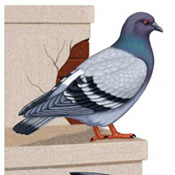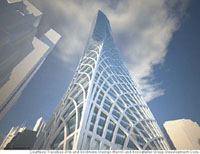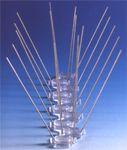
In San Francisco, there’s a lot of public discussion about the architectural designs submitted for the new Transbay Terminal. It will substantially change the City’s skyline and the feel of that part of downtown. If you’ve ever visited the current Transbay Terminal, you know we need a change.

The three architectural firms have submitted lots of provocative plans and pictures about how the new terminal will look. They all want to make their mark of the skyline of a major international city.
Things never look so perfect as they do in the planning stage. Pure vision is a wonderful thing. But as Carl Philipp Gottfried von Clausewitz once said, no plan survives its first encounter with the enemy.

That brings us to Pigeon Spikes. No, the image above isn’t one of the new tower designs. It’s the kind of thing that’s added to “great architecture” once it encounters the pigeon. It’s the ugly set of spikes added to ledges and surfaces on which pigeons might roost.
In the war between pigeons and architects, I’d have to say that the pigeons are winning. I’d like to challenge the architects to design the new Transbay Terminal so that it doesn’t require the subsequent addition of pigeon spikes (or even worse chicken wire nets). You can’t win a battle you don’t plan for.
Comments closed